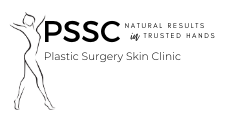If you ask the average person why they want to get cosmetic procedures, a very common answer would be “to combat the effects/signs of aging.” From BBL treatments to fractora treatments, this is a pretty sensible answer. But before you can combat something, you need to actually understand what you are fighting. What exactly causes us to display the signs of aging? Why does it happen? And what can we do about it?
The truth is, the different signs of aging have different if related causes. We’ll discuss a couple of the most common signs of aging here – and then give you some information
Many people want to use cosmetic procedures in order to combat the effects of aging. But in order to properly combat something, you need to understand what makes it happen. This piece will explain the science of aging, in brief, and the tools you can use to fight back.
What Causes Wrinkles?
One of the most classic signs of aging is wrinkles. We take getting wrinkles for granted – but don’t often stop to think about why they happen. A better way to understand the question of wrinkles, however, is to ask why you aren’t wrinkly to start with – after all, it’s not like the amount of skin you have changed during your lifetime.
Young skin looks young for two reasons. Firstly, it’s because it has greater elasticity. This means that your skin will easily maintain its appearance even if you stretch it out through use – like when talking or making expressions. However, you also need to look deeper underneath the skin – to collagen. This material is what gives your skin its “structure”. When you’re younger, your collagen is pretty good at restoring itself. However, as you age, your collagen can have trouble replenishing itself, leading to wrinkling of the skin.
What’s interesting is that not everyone suffers from the depletion of elasticity and collagen in the same way. Some factors for this are out of your control – such as genetics and ethnicity. However, there are certain other factors that you can control. Too much smoking and exposure to sunlight, for example, will tend to cause damage to your skin over time.
Why Do I Get Skin Blemishes?
Speaking of sun exposure, what about sunspots? Also known as liver spots, or simply age spots, discoloration of the skin seems to be a fact of life for many of us as we start to get older. But what actually causes these discolorations?
Sunspots are caused partially by what should be a normal process. Our body produces melanin, which gives your skin its color and can protect against ultraviolet radiation – better known as UV rays from the sun. Your body reacts to UV rays by creating more melanin to try to protect your skin. However, skin that has been through a lifetime of exposure to the sun may have melanin overdevelopment in certain areas, leading to dark spots/ hyperpigmentation.
What Can I Do About This?
Thankfully, once scientists began to identify the sources of these problems, cosmetic experts were able to identify ways to address those problems. And you can find plenty of those solutions at PSSC!
Generally, cosmetic surgeries to reverse the effects of aging on the skin try to accomplish two things – to try and help promote the generation of collagen under the skin to provide a firmer “base”, and to try to correct discoloration.
While you can try to target discolorations through creams, these aren’t going to give permanent results. You need to go deeper to try and help repair the sun-damaged cells. This is why Broad Band Light(BBL) treatment has taken off in popularity. Laser/Light treatments can help reach under the skin to provide color correction.
Similarly, if you want to help restructure the collagen under the skin, you’ll want some way to reach that deep. Fractora treatment for skin tightening is one of the most popular methods to accomplish this. This treatment uses Fractora pins to help transfer heat deep below the skin of the treated area, helping you replenish your collagen and regain a firmer-looking appearance to your skin.
You might think that you don’t need to worry about things like Fractora treatments and BBL treatments right now. But anyone over the age of 18 who wants blemishes or wrinkles dealt with is a candidate for the treatments mentioned. If you’d like more information, don’t hesitate to contact us!

